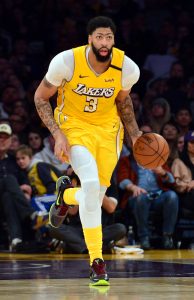The NBA revealed today that the estimated average salary for the 2020/21 season will be $10,000,000, while the Early Bird exception amount will be $10,047,450, according to Bobby Marks of ESPN and Eric Pincus of Bleacher Report (Twitter links).
The estimated average salary for a league year is defined as 104.5% of the average salary for the NBA’s previous league year, while the Early Bird amount is 105% of the previous average salary. Those figures are important for different reasons.
When a player signs a veteran contract extension, he can receive a starting salary worth either 120% of the final-year salary in his current deal or 120% of the league’s estimated average salary. So, extension-eligible players earning below $10MM in 2020/21 will be able to receive $12MM in the first season of a four-year extension.
As Marks notes, this would apply to players like Trail Blazers wing Gary Trent Jr., Nuggets guard Monte Morris, and Hornets guard Devonte’ Graham. If they want to sign extensions this fall that go into effect in 2021/22, they’d be eligible to receive up to $53.76MM over four years.
As for the Early Bird exception, it represents the starting salary that teams can offer to their own free agents using Early Bird rights, assuming that amount is greater than 175% of the player’s previous salary.
This will apply this offseason to free agents like Lakers point guard Rajon Rondo and Pistons big man Christian Wood. If their own teams want to re-sign them using Early Bird rights, the offers won’t be able to exceed $10,047,450 in year one. In order to offer a higher starting salary, those teams would have to use cap room (which the Pistons will have, but the Lakers won’t).
Because the salary cap isn’t increasing or decreasing for 2020/21, other values tied to the cap will remain unchanged. This applies to the maximum and minimum salaries, as well as the mid-level and bi-annual exceptions, as we explained earlier in the week. The tax apron ($138,928,000) and the limit on cash sent/received in trades ($5,617,000) will also be the same in ’20/21 as they were in ’19/20.
 We’ll likely soon be able to apply these numbers to contracts for free agents
We’ll likely soon be able to apply these numbers to contracts for free agents